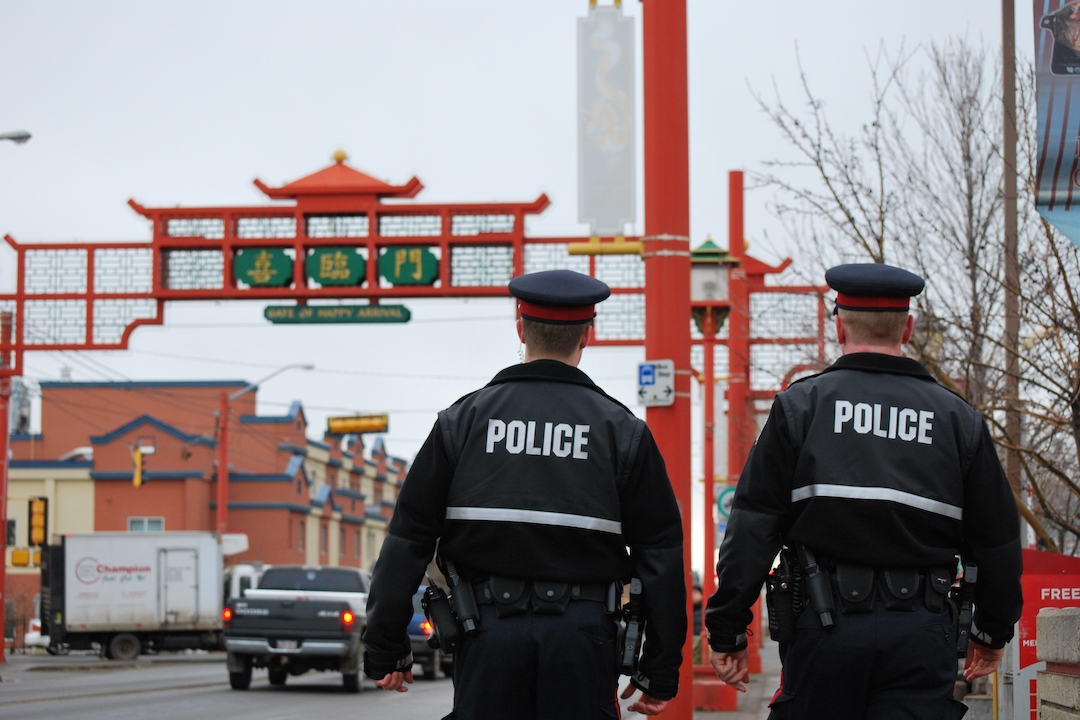The City of Edmonton awarded more than $700,000 of the $1 million Chinatown Recovery Fund to proposals focused on security rather than vibrancy, a report on the fund says.
The fund is part of both the Downtown Core and Transit System Safety Plan and The Chinatown Strategy. Its description says it's a post-COVID vibrancy fund akin to the Downtown Recovery Coalition.
The Chinatown Recovery Fund advisory committee approved proposals in 2022 and 2023. The work followed two unprovoked murders in Chinatown in May 2022 that left the community feeling unsafe.
"Vibrancy was one of the (fund's) goals — the main goal was to help provide some economic recovery coming out of both a pandemic and some of the challenges that were unique to Chinatown … the increase in homeless encampments, and the increase in social disorder," Brett Latchford, director of strategy and emerging economy at the City of Edmonton, told Taproot.
Latchford said the city received 75 proposals, and 16 projects got the green light. Nine were for security, and seven were for things like the arts, events, and repairs to the Chinese garden in Louise McKinney Riverfront Park, maintained by the Edmonton Chinese Garden Society.
A little more than $300,000 went to vibrancy projects. The most expensive of these was $160,000 to the Chinatown and Area Business Association for investment in four new business openings, and $70,000 to Chinatown Transformation Collaborative (better known as CTC) for sculptures.
By far the largest expenditure is a multi-project fund administered by the business association: $622,000 for more than 120 businesses to upgrade security.
A former organizer for CTC who worked on the fund said security was a key concern when considering proposals.
"We had an open house in October 2022, and at that public meeting, a lot of business owners were there, plus residents, too," Allan Kwan, who chaired the Chinatown Recovery Fund advisory committee, told Taproot. "The number one concern was safety and security."

About 70% of the City of Edmonton's Chinatown Recovery Fund has been allocated to security. The city says a new fund dedicated to vibrancy is in the works. (City of Edmonton)
Kwan had one of 12 votes during the adjudication process for the fund. The city had two, and nine remaining stakeholders each had one.
One was William Lau, Kwan's former CTC colleague. Lau said the preponderance of security projects for the fund was no one's first choice, but did address the community's needs.
"The amount of proposals and requests that came in that were requests for security was quite overwhelming, and I'd say that the committee did struggle with it," Lau said. "It seemed like nobody on the committee wanted to spend these very precious, very rare, limited dollars on security. It didn't feel generative. But I'd say with the amount of proposals that came in, we saw it as a much-needed step of building confidence within the community. We couldn't ignore the concerns that were so overwhelming."
Next on the docket is a city fund dedicated to vibrancy. Latchford said it was approved in December.
A city spokesperson told Taproot in an email that applications for this fund will open "sometime in March," and that more details on the application process will be available "in the coming weeks."
Lau said he's confident the city will continue to invest in Chinatown's future, including in measures that move past security and into vibrancy.
"(The recovery fund committee) had the confidence as a team to say 'Hey, this is our first batch of funds,'" he said. "We need to give everyone confidence, but also the foundation and commitment to move forward in the more generative work that we want to see as a community, which is also the foundation for why the city will be announcing the Chinatown vibrancy fund."
